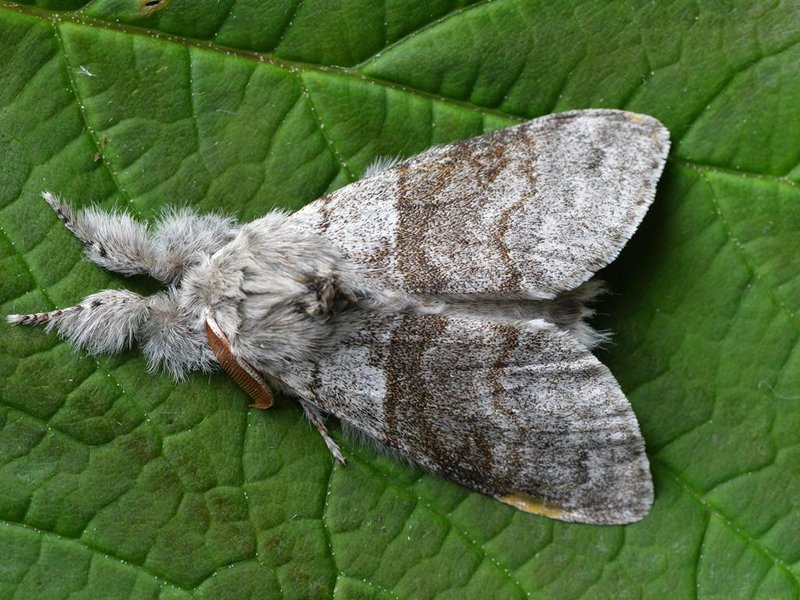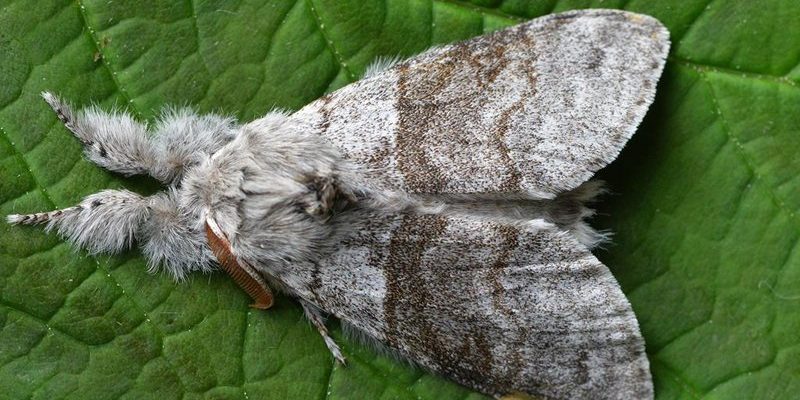
The Pale Tussock Moth, known scientifically as Lymantria dispar, is one of those fascinating creatures that often goes unnoticed in our backyards. With a striking appearance and intriguing behaviors, this moth offers a glimpse into the complex world of insects. If you’re curious about what makes the Pale Tussock Moth so unique, you’re in for a treat! Let’s dive into its characteristics, habitat, and more to see what this moth is all about.
Imagine walking through a lush forest or garden, surrounded by the hum of nature. Suddenly, a flash of movement catches your eye. It’s the Pale Tussock Moth, gracefully fluttering about. It’s not just its movement that captures attention; its fuzzy, pale body and colorful features make it one of the more visually appealing moths. Understanding this creature gives us a deeper appreciation for the biodiversity that surrounds us.
So, what exactly does this moth look like, and where can you find it? In the following sections, we’ll explore its physical traits, lifecycle, and even its dining preferences. You might find yourself looking at moths in a whole new light after learning about the Pale Tussock Moth!
Physical Characteristics
The Pale Tussock Moth is notable for its distinctive appearance. Adult moths typically have a wingspan of about 1.5 to 2.5 inches. Their forewings are often a muted gray or brown, allowing them to blend into their surroundings, while their hindwings can be a striking white with black markings. But what truly sets them apart are the fuzzy tufts on their bodies, which are a lovely pale yellow-green color. These tufts aren’t just for show; they also help in protecting the moth from predators by making it look larger and more intimidating.
One of the most interesting aspects of the Pale Tussock Moth is its caterpillar stage, which is just as striking as the adults. The caterpillars are covered in long, hairy projections that can be a mixture of green and yellow. While they might appear beautiful, their hairs can be irritating to human skin, so it’s best to admire them from a distance. The vibrant coloration acts as a warning to potential predators that they might not be a safe snack!
In summary, the Pale Tussock Moth’s physical characteristics are not just about beauty; they are also about survival. Whether it’s using camouflage or warning coloration, these adaptations are key to thriving in their ecosystems.
Habitat and Distribution
Pale Tussock Moths are quite adaptable when it comes to their habitat. You can usually find them in deciduous forests, gardens, and even urban areas. They thrive in environments that provide plenty of trees, as these are their primary host plants. Oak, maple, and birch trees are particular favorites for both the adult moths and their caterpillars.
The distribution of the Pale Tussock Moth spans much of North America and parts of Europe. They tend to favor regions with a temperate climate, where seasons change dramatically. This allows them to complete their lifecycle effectively, taking advantage of the spring and summer months for feeding and reproduction.
Interestingly, the adaptability of the Pale Tussock Moth means that they can be a common sight in your neighborhood, especially during the warmer months. If you’re out for a walk in the park, keep an eye out for them fluttering near trees or on leaves.
Lifecycle of the Pale Tussock Moth
The lifecycle of the Pale Tussock Moth is a classic example of metamorphosis, and it goes through four stages: egg, larva (caterpillar), pupa, and adult. Each stage has its own unique characteristics and requirements. It all begins with the female moth laying her eggs on the undersides of leaves. These eggs are laid in clusters and can number from 50 to 200 at a time.
As the eggs hatch in spring, out come the caterpillars. This stage is all about eating and growing. They feast on the leaves of their chosen host plants and can often consume enough to make a significant impact on the tree’s foliage. As they grow, they shed their skin several times in a process called molting, eventually reaching a size where they’re ready to pupate.
After around 4 to 6 weeks of munching on leaves, the caterpillars form a cocoon and enter the pupal stage. This is where the real magic happens! Inside the cocoon, they undergo significant changes before emerging as adult moths. The entire lifecycle from egg to adult can take around two months, depending on environmental conditions. Once they emerge, the adults fly around, mate, and the cycle begins again as females lay their eggs.
Diet and Feeding Habits
The diet of the Pale Tussock Moth is primarily vegetarian, focusing on a variety of trees and shrubs. As caterpillars, they have a voracious appetite for leaves and can sometimes be seen in large numbers, which can lead to leaf damage on their host plants. They prefer soft, tender leaves found on trees such as oaks, maples, and birches. This feeding behavior is crucial as it allows them to store energy for their transformative journey into adulthood.
For adult Pale Tussock Moths, the focus shifts. Instead of munching on leaves, they primarily feed on nectar from flowers. This change in diet is all about sustaining their energy for mating and flying around. You might even spot them fluttering about common garden flowers, sipping sweet nectar. This feeding helps in pollination, making them valuable contributors to their ecosystems.
It’s fascinating how their diet changes from caterpillar to adult, aligning perfectly with their lifecycle stages. This adaptation allows them to thrive in various environments by utilizing available resources at different times, a true testament to nature’s ingenuity.
Threats and Natural Predators
Like many creatures in the wild, the Pale Tussock Moth faces various threats that can impact its population. Natural predators include birds, wasps, and other insectivorous animals. The striking coloration of the caterpillars serves as a warning to these predators, indicating that they might not be the tastiest bite. Nevertheless, despite these defenses, many predators find ways to feast on them, particularly the younger caterpillars.
Another significant threat comes from environmental changes and habitat loss. As humans develop land and create urban landscapes, the natural habitats of the Pale Tussock Moth can diminish. Pollution and climate change also play roles in affecting their survival, as shifting weather patterns can disrupt their lifecycle.
Additionally, the use of pesticides can significantly impact their populations. While these chemicals are often used to control pests, they don’t discriminate and can harm non-target species such as the Pale Tussock Moth. Understanding these threats is crucial for conservation efforts aimed at protecting this remarkable insect and its habitat.
Interesting Facts About the Pale Tussock Moth
| Wingspan: | 1.5 to 2.5 inches |
| Lifecycle Duration: | Approximately 2 months |
| Diet: | Leaves as caterpillars, nectar as adults |
| Natural Predators: | Birds, wasps, and other insectivores |
| Habitat: | Deciduous forests, gardens, urban areas |
Conservation Efforts
Given the threats that the Pale Tussock Moth faces, conservation efforts are essential for ensuring its survival. Many organizations focus on preserving habitats that support biodiversity, including those of this beautiful moth. Community engagement in initiatives such as tree planting and reducing pesticide usage can go a long way in protecting not only the Pale Tussock Moth but also the broader ecosystem.
Education plays a vital role as well. By raising awareness about the importance of moths and other insects, we can foster a greater appreciation for their role in our environment. Schools, nature groups, and local communities can all participate in programs that highlight the significance of preserving habitats where these creatures thrive.
Conserving the Pale Tussock Moth is not just about saving one species; it’s about maintaining the delicate balance of nature. By supporting local wildlife and their habitats, we are contributing to a healthier planet for generations to come.
FAQ
What do Pale Tussock Moths look like?
Pale Tussock Moths are easily recognizable due to their fuzzy, pale yellow-green bodies and muted gray to brown forewings. Adults typically have a wingspan of 1.5 to 2.5 inches, while their caterpillars sport long, hairy projections. This unique appearance serves both as camouflage and a warning to potential predators.
Where can I find Pale Tussock Moths?
You can find Pale Tussock Moths in a variety of habitats, including deciduous forests, gardens, and urban areas. They tend to favor places with abundant host plants, such as oak, maple, and birch trees, making them a common sight during warmer months.
How long does the Pale Tussock Moth live?
The Pale Tussock Moth goes through a complete lifecycle that takes about two months from egg to adult. While the adult moths may only live for a few weeks to a couple of months after emerging, their lifecycle can vary based on environmental conditions.
Are Pale Tussock Moths harmful to humans?
While Pale Tussock Moths are not harmful to humans directly, their caterpillars can possess irritating hairs that may cause skin rash upon contact. It’s best to admire them from a safe distance to avoid any discomfort.
What do Pale Tussock Moth caterpillars eat?
The diet of Pale Tussock Moth caterpillars primarily consists of the leaves of trees such as oak, maple, and birch. They are known for their voracious appetite and can significantly impact tree foliage during their feeding period.
Do Pale Tussock Moths have any natural predators?
Yes, Pale Tussock Moths face threats from various predators, including birds, wasps, and other insectivores. Their striking coloration and hairy bodies serve as a defense mechanism against these predators, but many still find ways to prey on them.
What role do Pale Tussock Moths play in the ecosystem?
Pale Tussock Moths play an essential role in their ecosystems by serving as both prey for other animals and pollinators. Their feeding habits help with plant health, and their presence indicates a balanced and diverse environment.
How can I help protect Pale Tussock Moths?
You can help by engaging in conservation efforts that focus on protecting their habitats. Planting native trees, reducing pesticide use, and raising awareness about the importance of moths can all contribute to the survival of Pale Tussock Moths and other beneficial insects.
When is the best time to see Pale Tussock Moths?
The best time to see Pale Tussock Moths is during the warmer months, particularly in spring and summer when they are active. Adult moths can often be observed fluttering around flowers or resting on tree bark, providing ample opportunities for observation.
Are Pale Tussock Moths good pollinators?
Yes, as adults, Pale Tussock Moths feed on nectar from flowers, contributing to pollination. This makes them valuable in maintaining healthy ecosystems, as pollinators play a crucial role in plant reproduction and biodiversity.
Can Pale Tussock Moths be harmful to plants?
While they primarily feed on leaves, large populations of Pale Tussock Moth caterpillars can cause noticeable damage to trees. This can lead to defoliation, which in severe cases, may impact the health of affected trees. However, in a balanced ecosystem, they can also help stimulate new growth.

